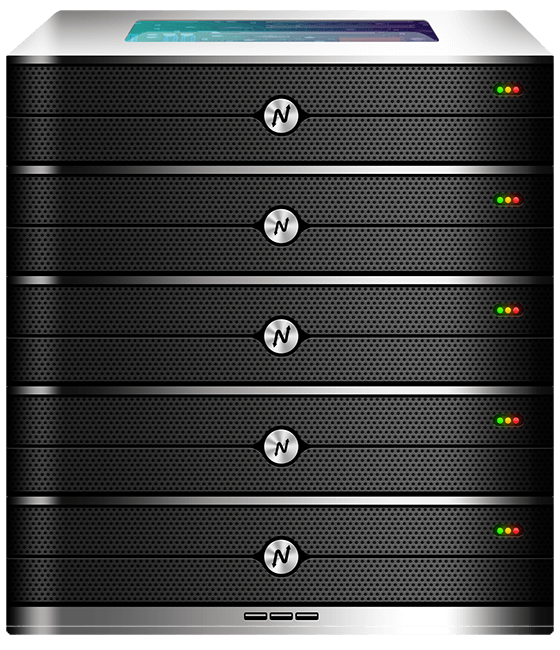If you’re evaluating indian vps providers, you want dependable performance, transparent pricing, and regional connectivity that serves Asia while remaining competitive globally. Choosing the right Indian VPS provider matters for startups, agencies, and developers who need predictable resources, low latency for regional users, and support that understands local networking. India-based infrastructure also brings cost-effectiveness, strong security practices, and scalable options that help international businesses expand without surprise bills.
Why Indian servers are a smart choice: they are cost-effective compared with many Western markets, deliver lower latency across Asia while remaining competitively fast worldwide, follow robust security and compliance practices, and provide scalable resources that let you grow without migrating frequently. This article walks through how to pick among indian vps providers, performance and uptime expectations, real-world use cases, comparison versus foreign regions, scalability strategies, FAQs, and actionable recommendations based on XenaxCloud plans.

What to expect from Indian VPS providers
When researching indian vps providers, focus on three pillars: performance, control, and support. Performance means predictable CPU, RAM, storage (SSD/NVMe), and bandwidth with measured I/O and network throughput. Control refers to root access, custom OS images, snapshots, and the ability to configure firewalls and backups. Support covers SLAs, 24/7 availability, response times, and hands-on help for networking issues.
Many modern Indian VPS providers offer KVM virtualization for isolation and performance. Look for plans that list exact vCPU and RAM allocations (not ambiguous “burst” credits). Good providers publish network peering partners and datacenter tiers. XenaxCloud’s VPS lineup provides clear specs and upgrade paths, which helps reduce downtime and simplifies capacity planning when you pick an Indian VPS provider. For a quick start, check XenaxCloud’s VPS options here: https://xenaxcloud.com/vps-server/.
How to choose the right VPS plan (step-by-step)
Choosing among indian vps providers is a practical exercise. Start by profiling your application: traffic patterns, memory and CPU needs, storage I/O, and peak concurrency.
- Estimate baseline resource needs. For small sites, a VPS with 2 vCores and 8GB RAM works; for heavier apps or databases, aim for 4+ vCores and 16GB+ RAM.
- Check storage type. SSD or NVMe delivers big gains for databases and dynamic sites.
- Evaluate bandwidth and port speed. A plan with 1Gbps uplink and adequate monthly TB limits avoids throttling.
- Inspect backup and snapshot policies. Daily backups and on-demand snapshots reduce restoration time.
- Confirm upgrade paths. Vertical scaling (adding vCPU/RAM) should be seamless; horizontal scaling (load balancing) should be supported.
For example, many teams begin on KVM VPS 1 — 2 Vcore CPU, 8GB RAM, 40GB Storage, 2TB Bandwidth, $5.99 and move to KVM VPS 2 — 4 Vcore CPU, 16GB RAM, 50GB Storage, 4TB Bandwidth, $10.79 as traffic grows. These concrete specs let you compare indian vps providers objectively and avoid overpaying for unused capacity.
Speed, uptime, and security advantages of Indian VPS providers
Performance from indian vps providers depends on datacenter quality, network peering, and hardware choices. Expect SSD/NVMe storage options, modern CPUs, and redundant networking in reputable Indian datacenters.
Speed and latency: hosting closer to your primary users reduces round-trip times and improves perceived speed. For sites serving Asia, an Indian VPS can cut latency significantly compared with European or North American regions. Pair VPS hosting with a CDN to ensure global visitors still get cached assets quickly.
Uptime and redundancy: look for Tier-III or better facilities, redundant power, and multiple upstream carriers. Many indian vps providers offer 99.9% uptime SLAs and 24/7 monitoring. For mission-critical systems, ask about SLA credits and escalation procedures.
Security: Indian VPS providers now offer managed firewalls, intrusion detection, DDoS mitigation, and automated patching options. Make sure SSH access uses key authentication, disable password logins, and enable regular snapshots. For regulatory or compliance needs, confirm the provider’s data handling and retention policies.
Comparison — Indian VPS providers vs US, Canada, Germany, UAE
Choosing where to host matters for latency, compliance, and audience reach. The table below compares Indian VPS providers with common foreign regions on key operational metrics. Pricing is intentionally excluded.
| Region | Typical Latency to APAC (ms) | Best For | Compliance & Privacy | Support & Provisioning |
|---|---|---|---|---|
| India | 10–60 | APAC audiences, cost-effective scale | Strong regional compliance options | 24/7 support and fast provisioning |
| US | 80–200 | North America, global CDN origins | Robust but varies by state | 24/7 enterprise support common |
| Canada | 100–220 | Privacy-focused NA/EU audiences | High privacy protection | 24/7 support common |
| Germany | 120–250 | GDPR-focused Europe traffic | Very strict data protection | Business-hour support with extended options |
| UAE | 80–200 | Middle East regional services | Regional regulations apply | Growing 24/7 availability |
This comparison shows why indian vps providers are attractive for Asia-focused traffic and why hybrid strategies (origin in India plus CDN edges globally) help serve worldwide audiences efficiently.
Real-world use cases for Indian VPS providers
Indian VPS providers serve a wide range of projects. Here are practical examples and the recommended plan types.
Ecommerce stores: High-concurrency carts and payment flows benefit from VPS with dedicated CPU and memory. Start with KVM VPS 2 — 4 Vcore CPU, 16GB RAM, 50GB Storage, 4TB Bandwidth, $10.79 and scale to higher KVM or Gold KVM VPS tiers for spikes.
SaaS applications: Multitenant apps need consistent performance and backup strategies. Use VPS with snapshot support and plan for horizontal scaling using load balancers and multiple instances.
Media and streaming: For media delivery optimize origin servers and use a CDN. Speed KVM VPS series provide higher I/O and bandwidth for streaming workloads.
Development and testing: Use low-cost KVM VPS 1 for dev stacks and CI runners.
Agencies and resellers: Consolidate multiple client sites with GrowGrid or reseller hosting to manage DNS and control panels centrally.
Each use case shows how indian vps providers support specific workload needs and how to choose the right XenaxCloud plan as you grow.
Why Indian servers from VPS providers can handle global traffic
Indian datacenters now sit on multiple submarine cable landings and have rich peering fabrics. This improves international routing and reduces single-point failures. When combined with CDN and Anycast DNS, an Indian VPS origin can serve global visitors with acceptable latency and consistent availability.
Technical reasons include multi-homing to Tier 1 carriers, peering at major exchanges, and redundant backbone paths. For apps that must serve both India and international markets, hosting on an Indian VPS and using edge caching yields a cost-effective global footprint.
Scalability options for startups and agencies using Indian VPS providers
Scalability is a major reason teams pick indian vps providers. Two common strategies:
Vertical scaling: increase vCPU, RAM, and storage on the same instance. This is easy for stateful services or databases.
Horizontal scaling: add more VPS instances behind load balancers and distribute state via shared datastores or managed DBs.
Startup path example with XenaxCloud: begin on StartUpHost — 2 Websites, 5GB Storage, 25GB Bandwidth, $0.59 for prototypes, move to KVM VPS 2 — 4 Vcore CPU, 16GB RAM, 50GB Storage, 4TB Bandwidth, $10.79 for production, and scale further to Speed or Gold KVM VPS plans as demand rises. Agencies should consider GrowGrid or reseller hosting to manage multiple clients easily.
Practical checklist when evaluating Indian VPS providers
Before you sign up, use this checklist:
- Clear vCPU/RAM/storage specs and exact bandwidth allowances.
- SSD/NVMe storage options and IOPS metrics for databases.
- Snapshot, backup, and restore policy details.
- DDoS mitigation and firewall controls.
- Network peering and uplink capacity.
- Upgrade paths and migration support.
- Transparent support SLAs and escalation routes.
A provider that answers these reliably is a strong candidate among indian vps providers.
FAQ —
What is the difference between Indian VPS and foreign VPS?
ndian VPS provides lower latency for Asian users and often more cost-effective plans, while foreign VPS may be closer to audiences in their regions and offer different compliance frameworks.
Can Indian servers handle global website traffic?
Yes, when combined with CDN and Anycast DNS, Indian servers can efficiently serve global traffic with acceptable latency.
How reliable is XenaxCloud hosting?
XenaxCloud offers monitored infrastructure, redundancy, and 24/7 support to maintain reliable VPS hosting.
How to choose the right server for my business?
Assess traffic location, compute and memory needs, I/O requirements, and growth plans; start with a modest VPS and scale based on metrics.
What plan should I pick for an agency handling multiple clients?
Consider GrowGrid — 5 Websites, 10GB Storage, 100GB Bandwidth, $1.19 or reseller hosting for compartmentalized client accounts.
Recommended XenaxCloud plans for Indian VPS projects
Based on common use cases among indian vps providers, these XenaxCloud plans are recommended:
- KVM VPS 1 — 2 Vcore CPU, 8GB RAM, 40GB Storage, 2TB Bandwidth, $5.99 — Entry-level dev and low-traffic sites.
- KVM VPS 2 — 4 Vcore CPU, 16GB RAM, 50GB Storage, 4TB Bandwidth, $10.79 — Best balance for production apps and eCommerce.
- Speed KVM VPS 3 — 8 Vcore CPU, 16GB RAM, 70GB Storage, 4TB Bandwidth, $14.39 — For performance-sensitive workloads needing extra I/O.
- GrowGrid — 5 Websites, 10GB Storage, 100GB Bandwidth, $1.19 — Agencies and multi-site management.
Startups can trial with StartUpHost — 2 Websites, 5GB Storage, 25GB Bandwidth, $0.59 and scale according to traffic. XenaxCloud also provides transparent upgrade paths and managed support to simplify scaling.
- 4 GB RAM
- 40 GB SSD Storage
- 2 TB Bandwidth
- 1 IPV4 & IPV6
Conclusion
If you are comparing indian vps providers, pick a provider that publishes clear specs, offers SSD/NVMe storage, provides robust backups, and supports simple, rapid scaling. Indian VPS providers deliver cost-effective performance for Asia-focused traffic while providing solid global reach when paired with CDN and Anycast DNS. XenaxCloud’s VPS lineup gives practical upgrade paths and engineering support to help you scale confidently.
Ready to try a trusted Indian VPS provider? Start with KVM VPS 2 for predictable production performance or test with KVM VPS 1 and scale as you grow. All XenaxCloud plans include a 15-day money-back guarantee, and the latest offers are available on the XenaxCloud Offers Page: https://xenaxcloud.com/offers. Explore VPS hosting and pick the plan that fits your project at XenaxCloud’s VPS page: https://xenaxcloud.com/vps-server/.






